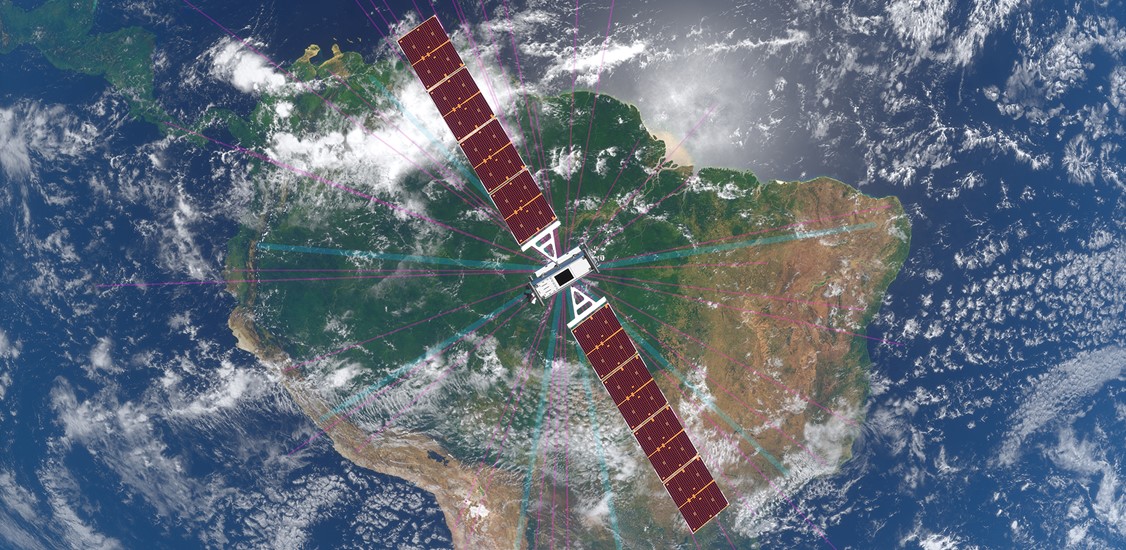Recent advances in satellite technology are bringing more focus to the role satellites can play in digital infrastructure projects, especially as these projects increasingly leverage cloud hosting and cloud services. While satellite is not a new technology, new innovations continue to emerge, which are allowing space and cloud to work together to deliver greater value.
Today, many organizations are looking at satellites not just to connect remote locations or provide more bandwidth to supplement terrestrial networks, but also to open new possibilities in edge computing, private 5G, IoT, big data, digital twinning and more, and do so at scale and with the flexibility to deliver connectivity where the compute happens. Here are a few ways that satellites can positively impact digital transformation and integrate closely with cloud providers.
Enabling automation - anytime, anywhere
Satellites are enabling automation-related technologies to operate in the most remote locations with seamless connectivity, acting as “fiber in the sky.” For example, in the commercial shipping industry, large vessels are using new applications that automate navigation systems and on-board operations systems. This is important because the International Maritime Organization (IMO) is starting to mandate fuel and energy efficiency standards for vessels of a certain size. Shipping companies can face fines if they don’t meet the new standards, which will go into effect in the coming years. Technology can play a key role in improving efficiency and keeping large vessels compliant with the standards, while making shipping companies greener in the future.
In addition, IoT-based instrumentation can be used for the cargo on the ship as well, tracking where containers are located, or if they have been moved to a new location. This prevents loss of valuable assets and inventory and reduces time spent by humans (manually) looking for containers that may have been misplaced. This IoT automation also saves time, improves efficiency, and reduces costs.
Gaining efficiencies in industrial processes
Industrial companies are continually looking to get better yields out of traditional processes that have been around for many years. This can help both the top line and bottom line for firms of all sizes. One example is the oil & gas industry. Energy companies can now get more oil out of the ground using vast amounts of data that makes their offshore exploration more accurate, using a satellite uplink to transmit the data from oil rigs up to space and then off to the cloud. There are thousands of sensors on an oil rig that can track sub-surface oceanic and seismic information. This is a lot of raw data that needs to be transmitted back to cloud systems for analysis. Big data engines can then synthesize meta-data sets that can be used at the exploration sites for more targeted exploration and extraction. This makes the exploration more efficient, uses less energy, and makes the overall process greener and more cost-effective.
Helping organizations become more data-driven
Satellites are enabling high-capacity connections from remote sites to cloud data centers all over the world, where data collection, storage and advanced analysis can be performed. These advanced processes are cloud-powered, edge compute-powered, and compute-continuum powered. At the same time, the amount of data that is being generated is increasing rapidly. According to EarthWeb, 3.5 quintillion bytes of data are being created every day, and it is estimated that the amount of data is doubling approximately every two years.
High-performance compute processes are becoming more distributed, with computing happening at the edge, closer to where action needs to be taken. These workloads are dynamic in nature, and organizations need a high-performing network to “follow the workloads.” This is where the flexibility of high throughput and non-geostationary orbit satellites such as those in medium Earth orbit, come into play – they can deliver high-performance connectivity around the world to support the workloads wherever they may be.
These data-intensive processes are not just limited to companies. Military and government cloud adoption continues to grow, and with that the need for secure and sovereign cloud access becomes more important, especially when connecting to operating bases in international locations. There are also connected combatants during military conflicts that need mobile extensions to their connectivity fabric (i.e., private 5G extensions). The rising use of drones and unmanned aircraft that capture images and video in real-time create the need for transmission back to a cloud or ground station for real-time processing and decision making. This is all built upon a distributed cloud architecture, so more reach and greater bandwidth are needed to make the mission operation run smoothly.
Assuring continuity of critical operations
Severe weather presents a range of challenges for first responders, and the frequency of these events is increasing. In 2023 alone, there have already been 14 named storms - six hurricanes and eight tropical storms. Wildfires have increased in 2023 vs. 2022 levels as well. When severe weather or disasters affect fiber-optic or other wired connections, satellite can resume high-bandwidth connectivity “on the pause” from space for disaster recovery.
During these events, first responder agencies need to get connected quickly. Beyond basic broadband, they want local edge cloud capabilities to build a private 5G bubble, which can provide more secure, high-performance localized person-to-person connectivity and site-to-headquarters communications for use cases such as mission-critical push-to-talk, video, wearables for first responders and cloud-based communications applications like Microsoft Teams. The wide area network needs to be re-thought to make all this happen.
No network, no cloud
Digital transformation involves leveraging a wide range of cloud-driven technologies, including virtualization, IoT, 5G, augmented and virtual reality, big data analytics, digital twinning, AI and more. All of these technologies can provide great benefits, but they need a high-capacity network to deliver connectivity anytime, anywhere.
In all, the cloud is essential to make digital transformation a reality, but cloud systems need a robust, high-performance to work properly. That’s where satellite comes in. A reliable, high-performance satellite network is critical for supporting cloud infrastructure, ensuring ubiquitous access and extended cloud capabilities to remote sites.
The end result: Successful outcomes that provide a return on organizations’ digitalization investments.






















